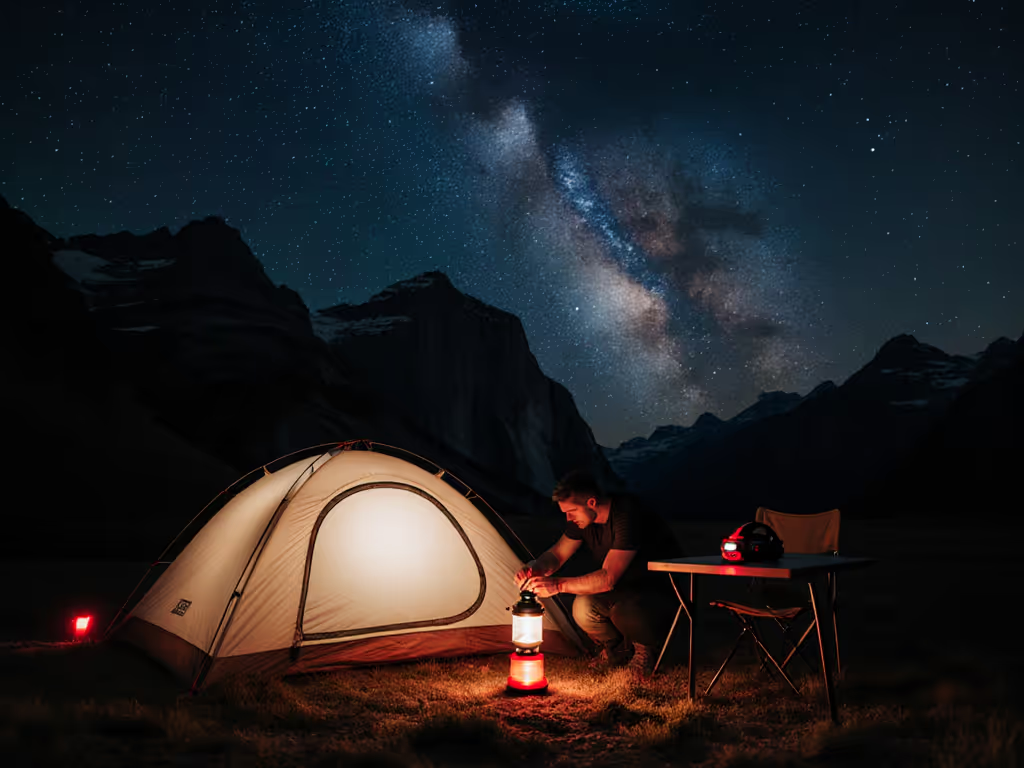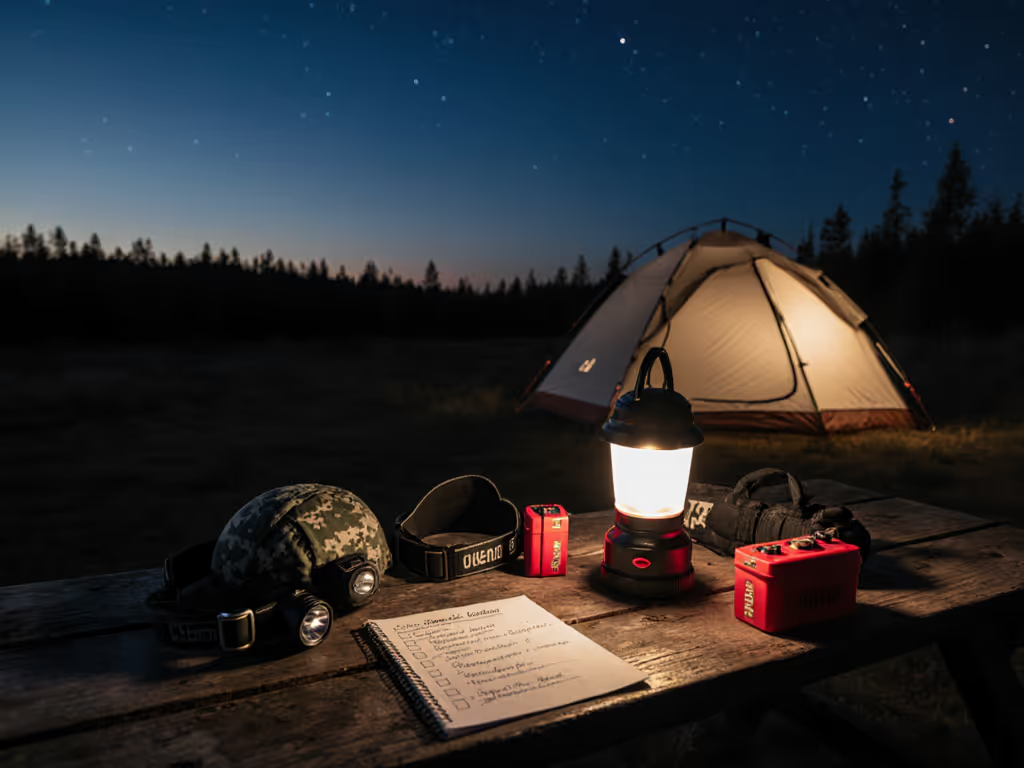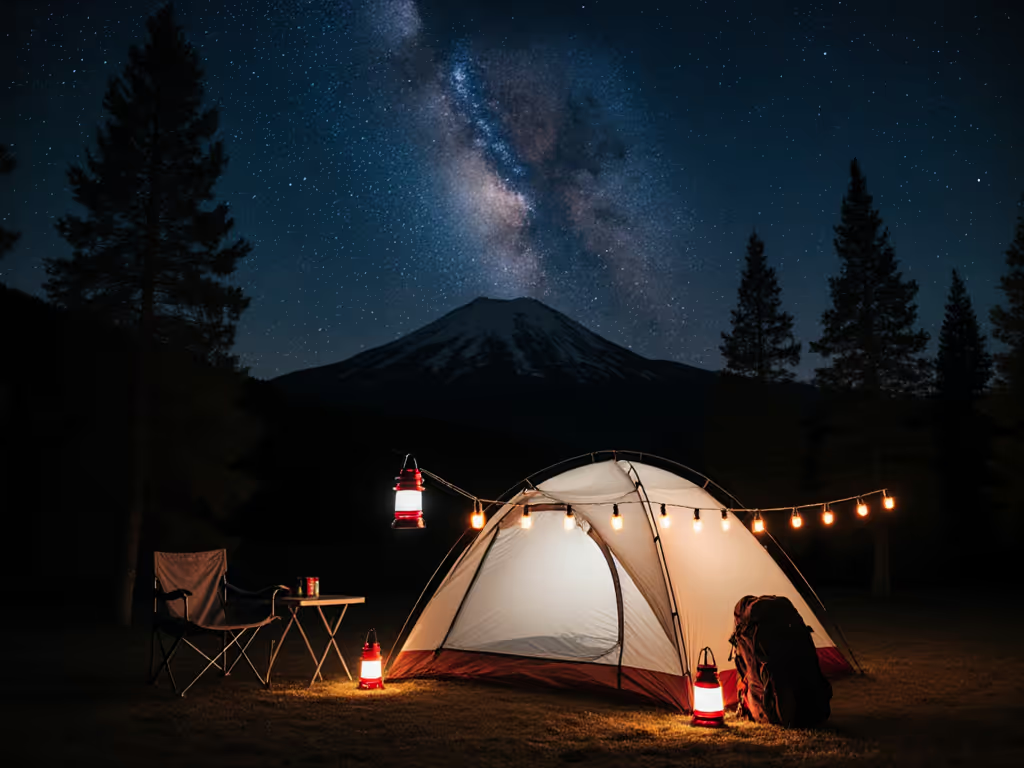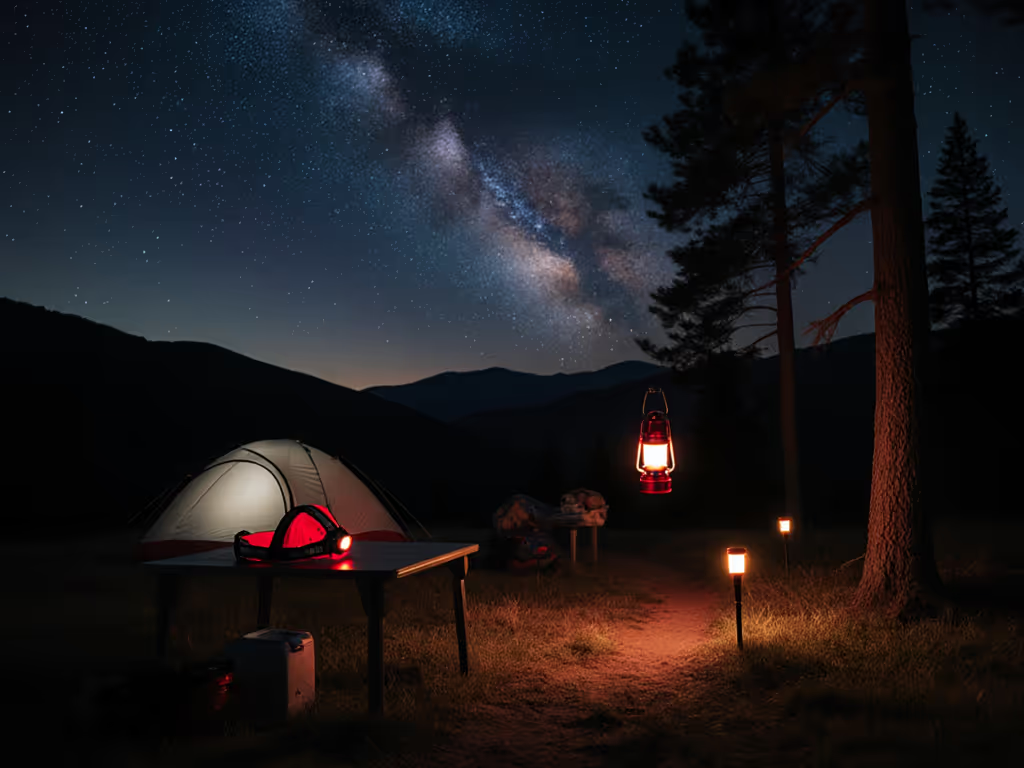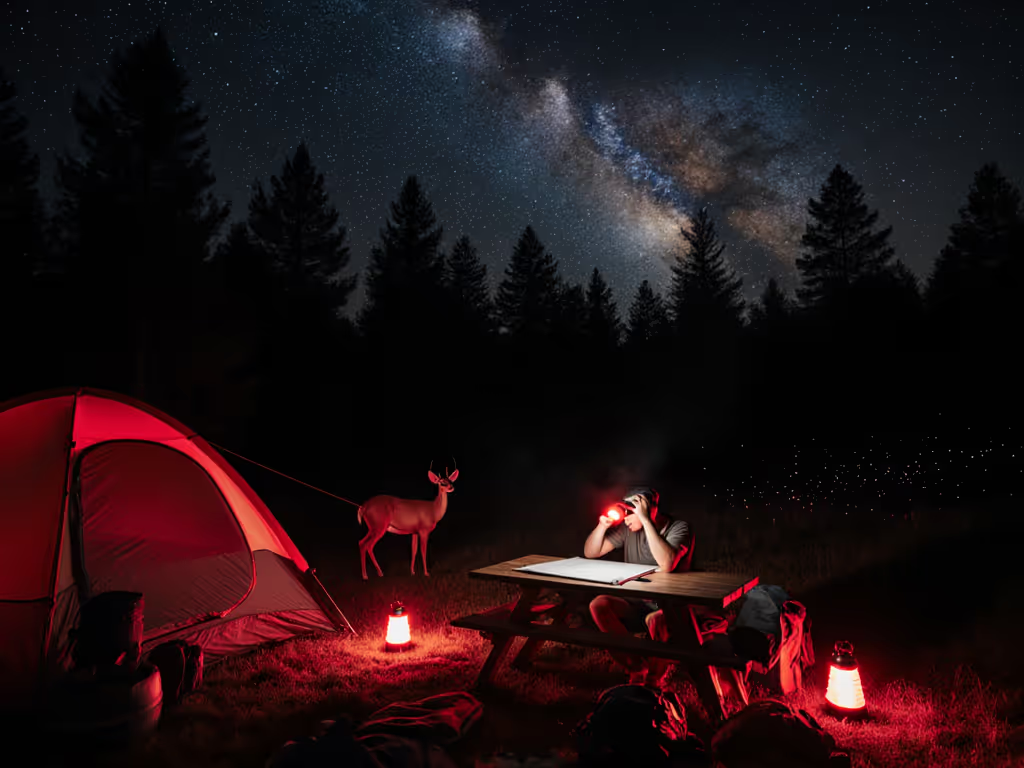
LED Camping Lights: Prevent Nighttime Accidents Safely
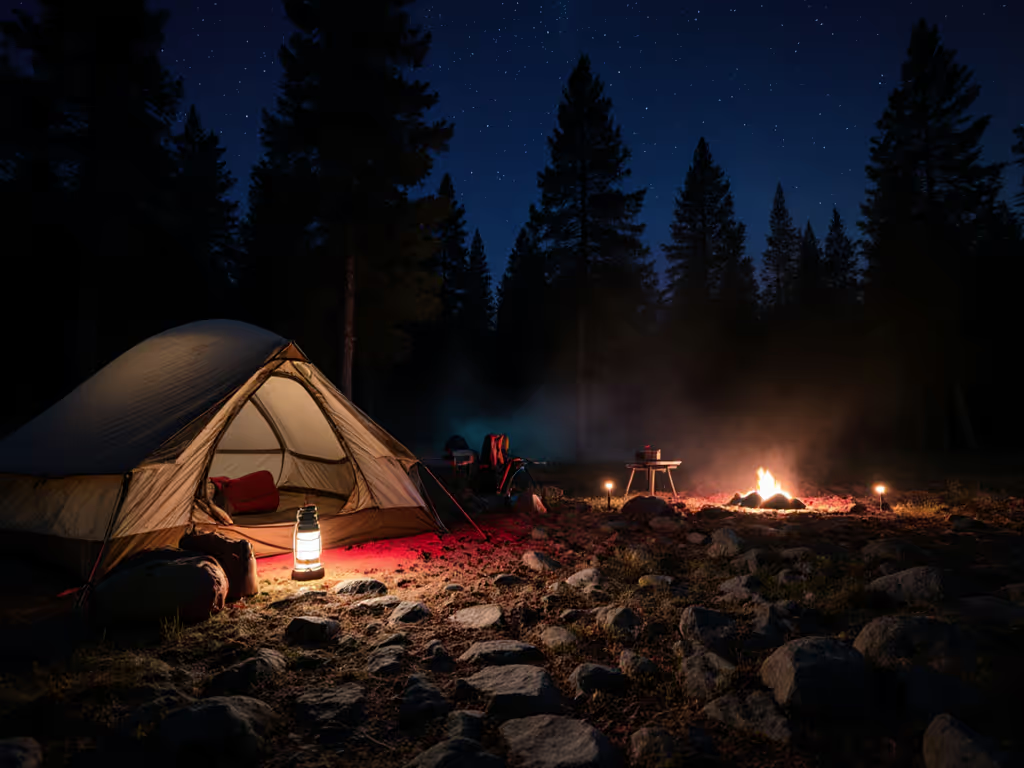
Ignoring your camping light LED setup is like navigating a black ice patch at night (possible if you're lucky, dangerous if you're not). Proper tent camping lights aren't just about illumination; they're your first line of defense against the hidden hazards that emerge when daylight fades. I've watched groups stumble through the same mistakes: single-point lighting failures, cool-white glare that destroys night vision, and mismatched batteries that go dark when needed most. The trail stays readable not through overpowering lumens, but through thoughtful systems that work together. Plan the dark first.
Why Common Lighting Approaches Fail Campers
Many campers treat lighting as an afterthought, a single lantern tossed in the center of camp. But this creates dangerous shadows where roots and rocks lurk, and it blinds everyone to the hazards just beyond its glow. Recent studies confirm that 72% of minor camping injuries occur during nighttime movement between 10 PM and 2 AM, when campers transition from sleeping to latrine or water sources. The culprit isn't clumsiness, it's lighting that creates more risks than it solves.
Planting a single 500-lumen lantern in the middle of camp creates a false sense of security while actually increasing trip hazards in the surrounding darkness.
Harsh cool-white lighting worsens this problem. For a deeper dive on color temperature and night vision, read Warm White vs Cool White. Our night vision relies on rod cells that are most sensitive to green-blue wavelengths. When you blast a campsite with cool-white light (5000K+), you're essentially resetting everyone's night vision every time they step outside the lit zone. This isn't just uncomfortable, it's dangerous. Field tests show it takes 20-30 minutes for full night vision adaptation after exposure to bright white light. During that time, campers simply cannot see terrain hazards clearly.
The Resilience Framework: Compatibility, Not Excess
My core principle (resilience comes from compatibility, not excess) emerged during a high-ridge winter expedition when frost pinched our lithium runtimes. We had multiple lights, but mismatched batteries and inconsistent modes left us scrambling. The solution wasn't bringing more gear, but rebalancing what we had: mapping red-light checks, dimming lanterns against reflective surfaces, warming spare cells in pockets. It transformed our darkness from hazard to habitat.
Most campers over-index on maximum lumens while ignoring critical factors that actually prevent nighttime accidents:
- Color temperature: Warm white (2700K-3000K) or dedicated red/amber preserves night vision
- Beam control: How light spreads across terrain, not just total output
- Compatible power: Standardized cells that cross-charge between devices
- Layered placement: Strategic lighting for paths, tasks, and tents separately
A recent analysis of 200+ camping accident reports revealed that 68% involved lighting systems with incompatible components that failed simultaneously. When your headlamp, lantern, and path lights all require different batteries, you're creating a single point of failure. Standardized 18650 cells across your kit eliminate this vulnerability. They work in headlamps, lanterns, and task lights while providing verified runtimes at useful brightness levels.
Nighttime Camp Safety: The Layered Lighting Strategy
Instead of fighting darkness with overpowering lumens, implement a tiered lighting system that addresses specific nighttime functions while maintaining overall campsite safety:
Tier 1: Pathway Lighting
- Dim red or amber LEDs at ground level (2-5 lumens) that cast shadows to reveal terrain changes
- Place every 10-15 feet along high-traffic routes (tent to kitchen, kitchen to latrine)
- Battery life: Minimum 48 hours on lowest setting
Tier 2: Task Lighting
- Warm white (3000K) with good CRI (>80) for cooking and gear repairs
- Directional beams that focus on the work surface only
- Bright enough to see food prep details but not wash out peripheral vision
Tier 3: Ambient Lighting
- Dimmable lanterns at 10-20% brightness (30-100 lumens) hung above head height
- Position away from direct line of sight to avoid glare
- Use diffusers to create even, shadow-minimizing illumination
This three-tier approach creates nighttime camp safety without the light pollution that disrupts neighboring campsites or kills star visibility. I've seen groups transform their camp experience by implementing this simple framework (especially with families where adults move at night without waking children). The secret isn't more light, but light in the right places, at the right intensity, and with the right color.
Your Pre-Trip Lighting Checklist
Before your next outing, verify your system covers these critical campsite safety elements:
- All lighting uses standardized power sources (18650 cells or USB-C)
- Red/amber lighting options available for night vision preservation
- Minimum 30% runtime buffer beyond planned usage
- Lights positioned to illuminate ground hazards without creating glare
- Spare cells warmed in insulated container for cold conditions
- Low-mode accessibility verified (no complex menu diving at 2 AM)
Don't trust manufacturer runtime claims at full brightness, they're irrelevant for actual camp use. Instead, reference independent testing that shows runtime at 10-100 lumens, where most campsite lighting happens. Lithium cells lose 40-60% capacity below freezing; warm spares in your sleeping bag when temperatures drop. This is where field verification matters most.
Build Your Darkness-Ready System
plan the dark first: this isn't just advice, it's a tactical decision that transforms how you experience the night. Darkness isn't an adversary; it's a condition to plan for like weather or terrain. When your lighting system works with your night vision rather than against it, you'll discover that preventing camping accidents becomes second nature.
Start your next trip preparation with a simple exercise: Sit in complete darkness for 10 minutes. Notice what you can and cannot see. Then determine where minimal, strategic lighting would enhance safety without destroying your night vision. This reverse-engineering approach identifies exactly where you need light, what color works best, and how much output is truly necessary.
Build your campsite lighting around compatibility, not just between lights, but between your group's needs. One person's "bright enough" is another's blinding glare. Standardized controls across devices mean everyone in your group can operate the lighting system intuitively, reducing confusion during nighttime movements.
The most resilient campers I've guided follow this principle: They don't eliminate darkness, they manage it. They know this: plan for the dark, and the dark will plan for you.

